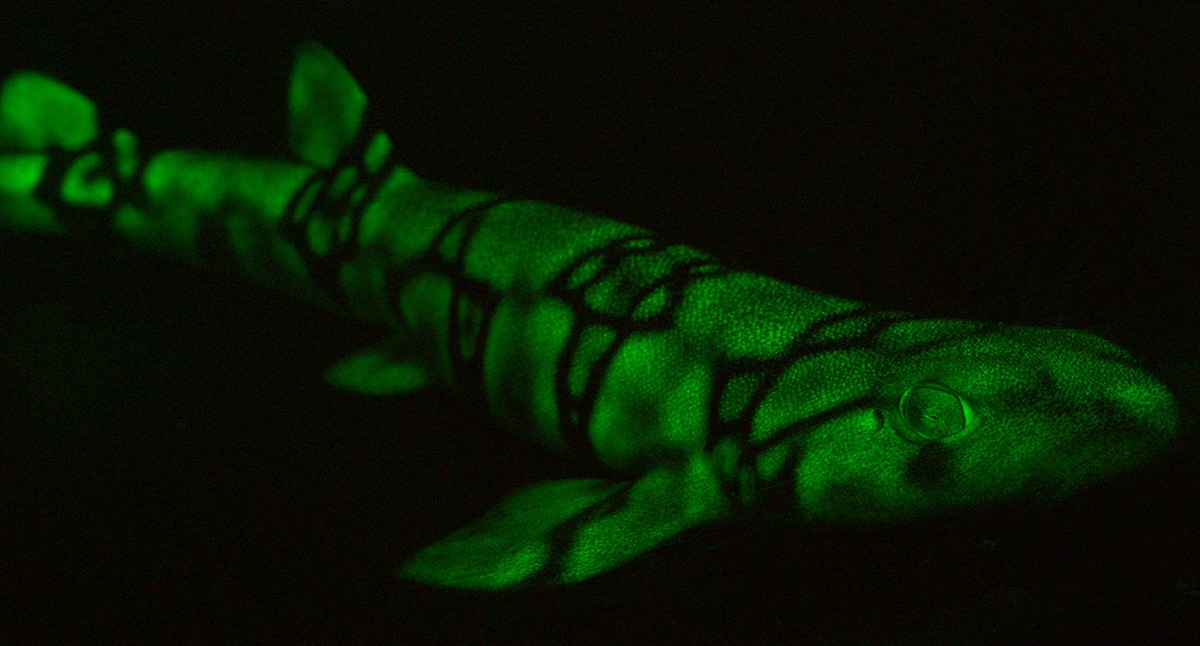
Fluorescence filters create ‘shark in the dark’ camera
Fluorescence filters that mimic the structure of a catshark’s eye have been used to reveal that the creatures may be much more visible to one another in the depths of the ocean than they are to other marine life, thanks to a pattern of biofluorescence on their skin.
Visual capability and fluorescence emission
Catsharks were known to emit a bright green fluorescence, but new research by a team led by the American Museum of Natural History has found that they increase the contrast of this fluorescence when they are deeper in the water – and that other catsharks can see it.
John Sparks, a curator of the museum’s Department of Ichthyology and one of the paper’s co-authors, said: “We’ve already shown that catsharks are brightly fluorescent, and this work takes that research a step further, making the case that biofluorescence makes them easier to see by members of the same species. “This is one of the first papers on biofluorescence to show a connection between visual capability and fluorescence emission, and a big step toward a functional explanation for fluorescence in fishes.”
Catsharks are not the only marine life to exhibit biofluorescence, and scientists are rapidly learning more about the way in which this capability is used by many different species, not only including fish but also other creatures like turtles.
Fluorescent fish-eye lens
Deep in the ocean, there is very little light – and the only wavelengths that penetrate so deep are at the blue end of the spectrum – yet biofluorescence allows aquatic creatures to absorb the small amount of blue light that is present, and emit it brightly in the red or green wavelength range.
Learning about this requires fluorescence filters to build cameras that give new meaning to the term ‘fish-eye lens’, as well as artificial lighting that mimics the wavelengths and frequencies of light present in the deep ocean.
Take a look at some of our other blog posts about the fascinating uses of fluorescent filters.

